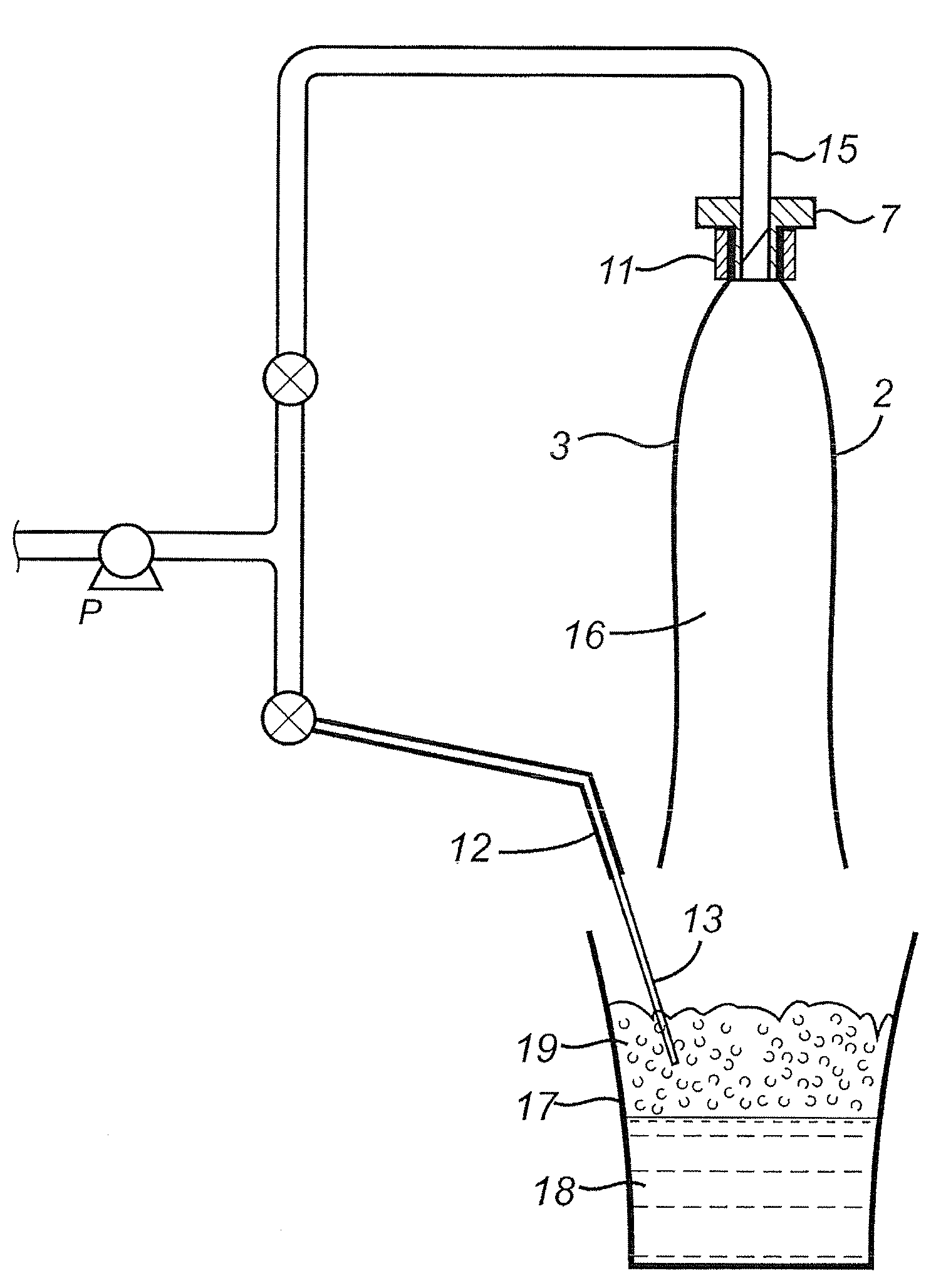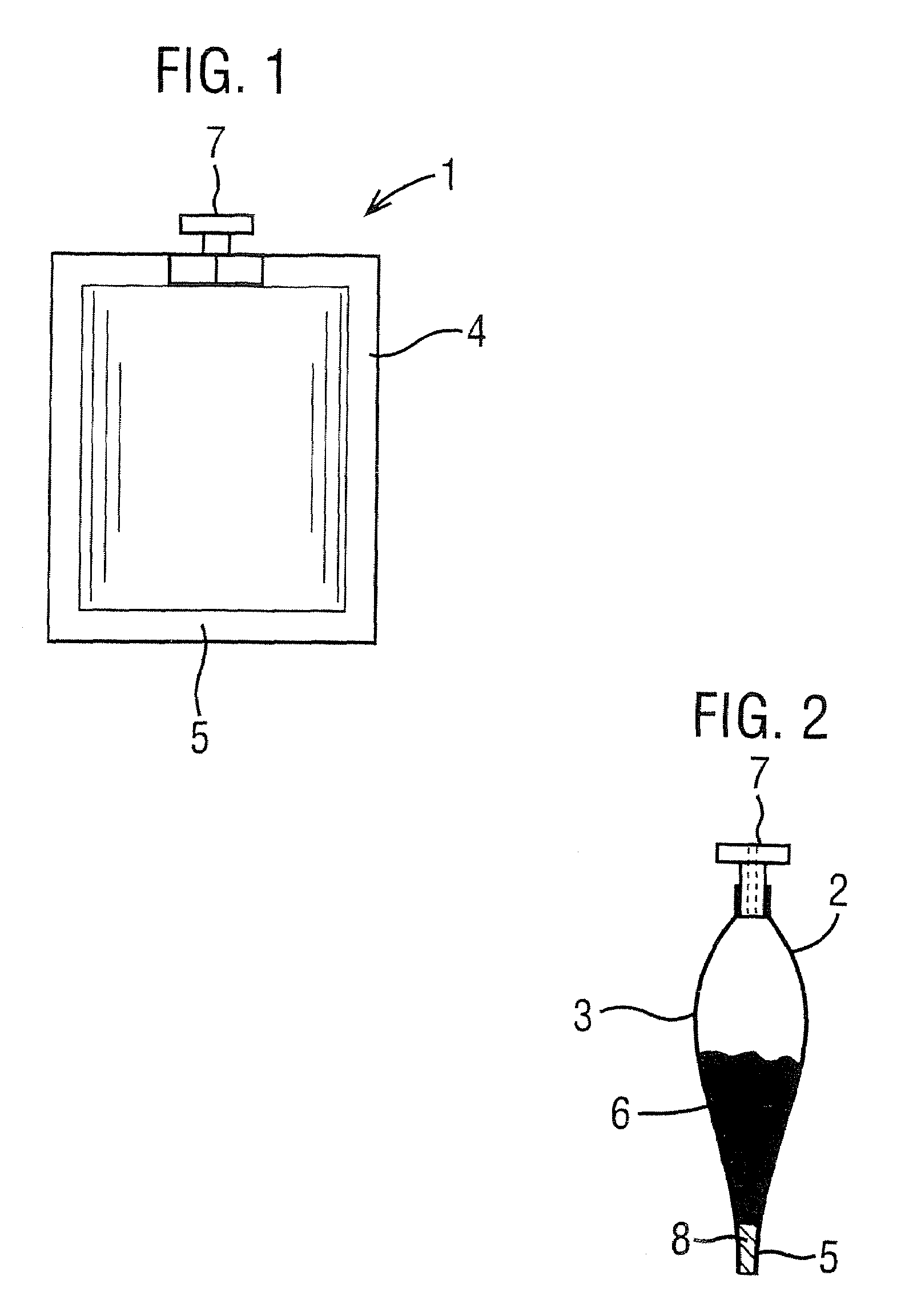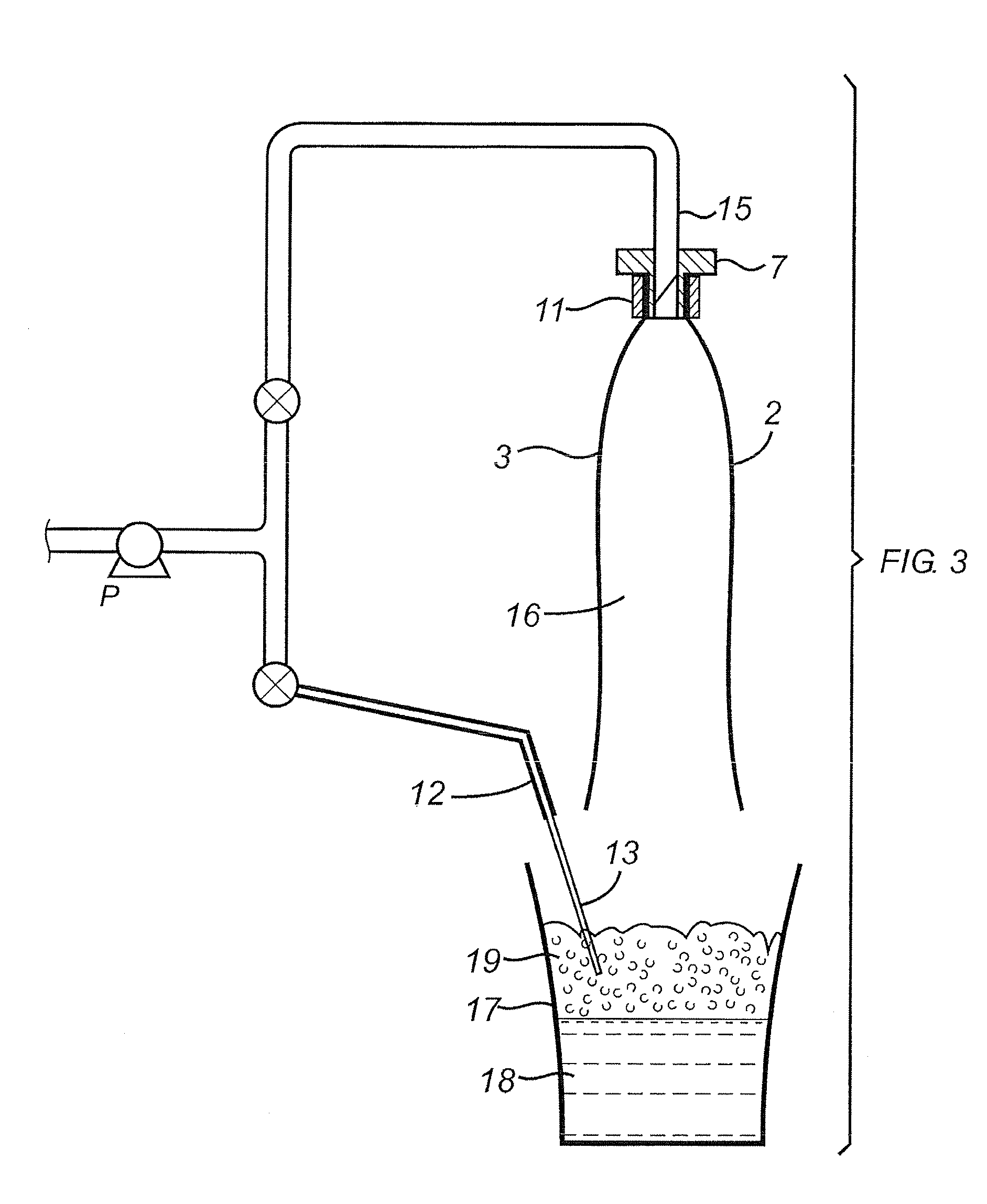Methods, capsule and apparatuses for the production of foamed drinks
a beverage and foam technology, applied in the field of foamed beverage multi-component production, can solve the problems of difficult to handle fresh or liquid milk the traditional method of forming hot milk foam for cappuccino or latte does not lend itself to use in beverage vending installations, and the majority of vending installations are not equipped to supply steam under pressur
- Summary
- Abstract
- Description
- Claims
- Application Information
AI Technical Summary
Benefits of technology
Problems solved by technology
Method used
Image
Examples
Embodiment Construction
[0117]Referring to FIGS. 1 and 2, the capsule 1 is in the form of a sachet formed from two sheets of laminated, metallized flexible plastic film 2,3 bonded together around a margin 4. A lower part 5 of the margin is bonded by means of a layer of adhesive 8 that can be released by the action of hot water inside the sachet. In a top margin of the sachet a nozzle 7 is inserted between the sheets 2,3 and bonded thereto in air tight fashion. The capsule has an internal volume of approximately 50 cm3 when fully distended. Thus far the construction of the package 1 is similar to the beverage brewing sachets described in EP-A-0179641 or WO99 / 05036. The capsule is approximately half filled with approximately 5-10 g of a foamable powdered milk 6.
[0118]The nozzle 7 is formed by injection moulding of a thermoplastic material such as polypropylene. It is bonded by adhesive or melt bonding in air-tight fashion to the front and back sheets 2, 3 of the sachet. The nozzle 7 comprises a bore region h...
PUM
 Login to View More
Login to View More Abstract
Description
Claims
Application Information
 Login to View More
Login to View More - R&D
- Intellectual Property
- Life Sciences
- Materials
- Tech Scout
- Unparalleled Data Quality
- Higher Quality Content
- 60% Fewer Hallucinations
Browse by: Latest US Patents, China's latest patents, Technical Efficacy Thesaurus, Application Domain, Technology Topic, Popular Technical Reports.
© 2025 PatSnap. All rights reserved.Legal|Privacy policy|Modern Slavery Act Transparency Statement|Sitemap|About US| Contact US: help@patsnap.com



